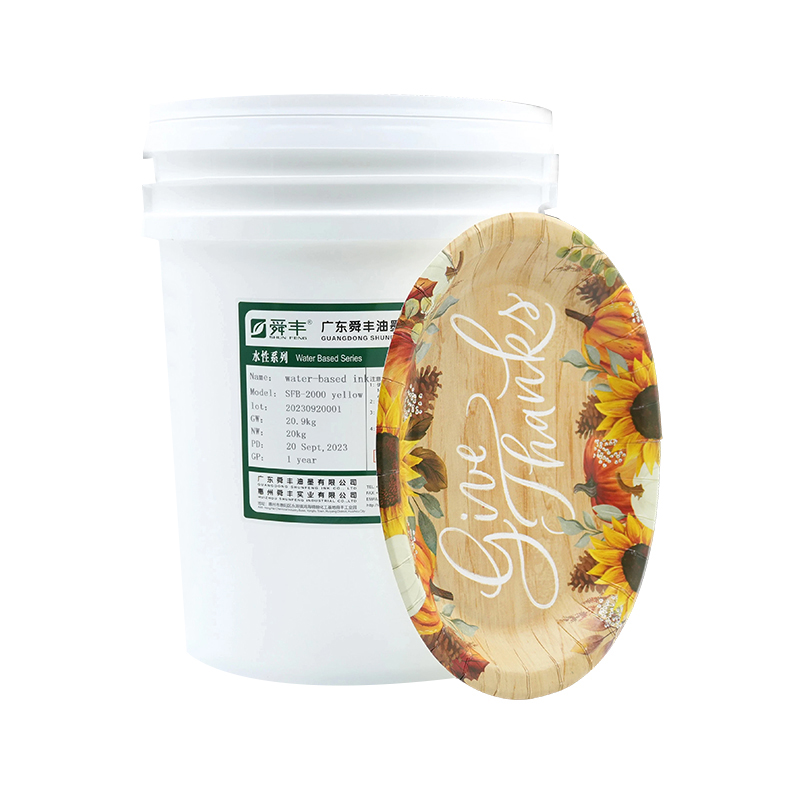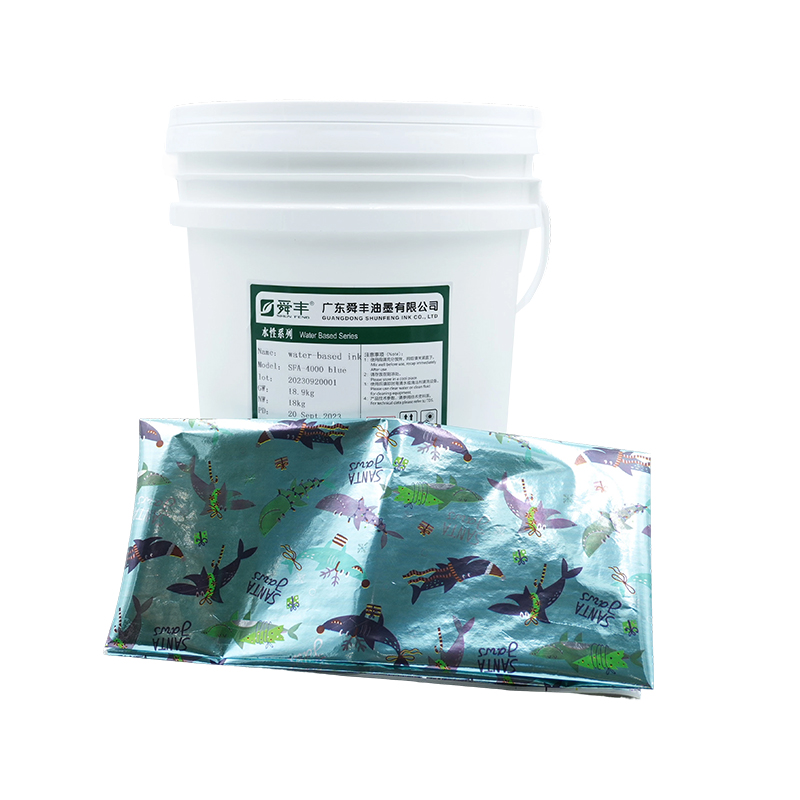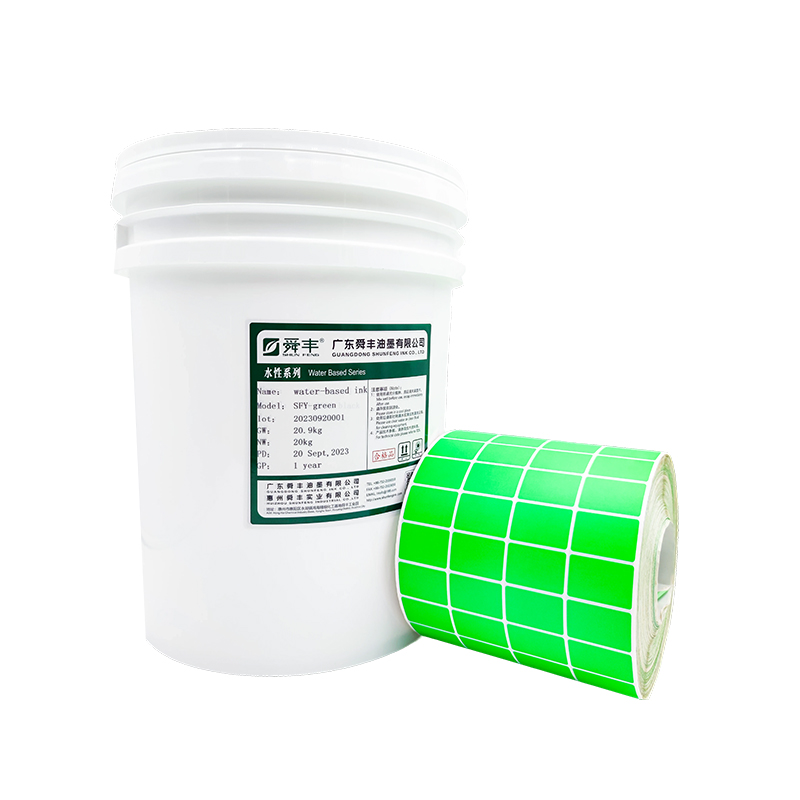What are the factors that affect the weather resistance of flexo water-based fluorescent ink and what are the technical means to enhance its weather resistance?
Release Time : 2025-04-24
The weather resistance of flexo water-based fluorescent ink is related to the long-term use effect of printed products. Exploring its influencing factors and enhancement technology is of great significance to improving the quality of ink.
Flexo water-based fluorescent ink is widely used in packaging printing, advertising and other fields due to its advantages such as environmental protection and bright colors. However, it is prone to fading and weakening of fluorescent brightness in outdoor or long-term exposure environments, which seriously affects the visual effect and service life of printed products. In-depth analysis of the factors affecting weather resistance and seeking effective enhancement technologies are the key to improving the quality of flexo water-based fluorescent ink and expanding its application range.
Raw materials are the basic factors that determine the weather resistance of flexo water-based fluorescent ink. Among them, the performance of fluorescent pigments is crucial. Different types of fluorescent pigments, such as organic fluorescent pigments and inorganic fluorescent pigments, have significant differences in their light resistance and heat resistance. Although organic fluorescent pigments are brightly colored, they have poor light resistance and are prone to molecular structure changes under ultraviolet irradiation, resulting in a decrease in fluorescence intensity; while inorganic fluorescent pigments have better light resistance, but the color brightness is relatively insufficient. In addition, as the film-forming material of ink, the weather resistance of resin will also affect the overall performance of ink. Water-based acrylic resin has good weather resistance and flexibility, but some low-quality resins may crack and powder under long-term light and humidity changes, which will destroy the protective structure of fluorescent pigments and reduce weather resistance.
Environmental factors are key external factors affecting the weather resistance of flexo water-based fluorescent ink. Ultraviolet rays are the main cause of ink fading and fluorescence attenuation. Its high-intensity radiation energy will destroy the chemical bonds between fluorescent pigments and resins, triggering photodegradation reactions. Temperature changes should not be ignored. High temperatures will accelerate the chemical reactions of various components in the ink, leading to pigment decomposition and resin aging; low temperatures may make the ink film brittle and reduce its ability to protect the pigment. In addition, humidity and rain erosion will also affect the weather resistance of ink. A humid environment can easily cause the ink film to absorb water and swell, reducing its adhesion. Rainwater may also dissolve some soluble components in the ink, leading to color loss and decreased fluorescence performance.
Optimizing the ink formula is an effective way to enhance weather resistance. In terms of pigment selection, high-performance fluorescent pigments are used, and UV absorbers and light stabilizers are added. UV absorbers can absorb UV energy and convert it into harmless heat energy release, reducing the damage of UV to pigments and resins; light stabilizers can capture free radicals, inhibit photooxidation reactions, and extend the service life of inks. It is also crucial to adjust the type and ratio of resins. Water-based resins with excellent weather resistance are selected, and different types of resins are reasonably matched to improve the comprehensive performance of the ink film. At the same time, antioxidants are appropriately added to prevent the resin from aging under oxidation and further enhance the weather resistance of the ink.
The improvement of printing technology plays an important role in improving the weather resistance of flexo water-based fluorescent ink. During the printing process, control the appropriate printing pressure and speed to ensure uniform transfer of ink, form a dense and continuous ink film layer, and reduce the decline in weather resistance caused by film defects. Optimizing the drying process is also very critical. Use reasonable drying temperature and time to avoid residual moisture in the ink due to insufficient drying, which affects the performance of the film layer; at the same time, prevent excessive drying from causing cracking of the film layer. In addition, increasing the number of printing layers or using a multi-layer printing process can form a thicker ink film layer, enhance the protection of fluorescent pigments, and improve weather resistance.
Surface treatment technology can provide additional protection for inks and further enhance weather resistance. Apply a layer of weather-resistant varnish or protective film on the surface of printed matter, such as ultraviolet curing (UV) varnish, water-based varnish, etc. UV varnish has the characteristics of high hardness, good wear resistance, and strong UV resistance, which can effectively isolate the erosion of the ink by the external environment; water-based varnish is environmentally friendly and can form a dense protective film on the surface of the ink to improve the water resistance and stain resistance of the ink. In addition, the use of lamination technology to cover a layer of plastic film on the surface of the printed matter can also play a good protective role, significantly improving the weather resistance of the ink and the service life of the printed matter.
The weather resistance of flexo water-based fluorescent ink is affected by many factors such as raw materials and environmental factors. Through formula optimization, process improvement and surface treatment and other technical means, its weather resistance can be effectively enhanced. With the continuous development of science and technology, more new materials and advanced technologies will be applied to the field of flexo water-based fluorescent ink in the future to further improve its weather resistance and comprehensive performance, and provide strong support for the green and high-quality development of the printing industry.







